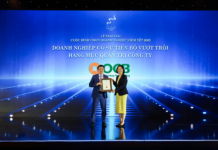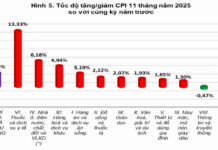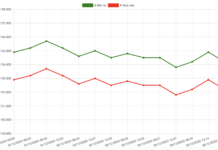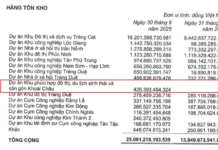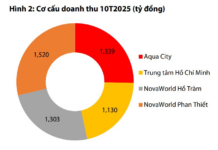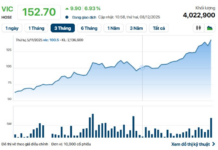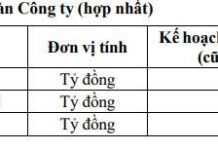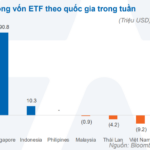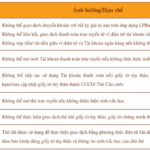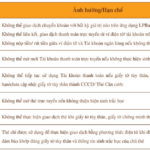lstm
According to the Ministry of Agriculture and Rural Development, Vietnam’s rice exports for the first nine months of 2024 reached 7 million tons, valued at $4.37 billion, up 9.2% in volume and 23.5% in value compared to the same period last year. The average export price reached $624 per ton, up 13.1% over the same period in 2023.
VIETNAM IS CAPTURING THE HIGH-END RICE SEGMENT
In the global market, India’s ban on exports of non-basmati white rice – a specialty rice famous in India and South Asia – since July 20, 2023, has had a profound impact on global export prices over the past year, pushing them to their highest level in 15 years. Despite the ban, according to data from India’s Ministry of Commerce, in the first nine months of 2024, India remained the world’s largest rice exporter, with nearly 10.9 million tons; Vietnam and Thailand followed with 7 million tons each.
On September 28, 2024, the Indian government suspended the ban on exports of non-basmati milled rice, ending a ban that had lasted for more than 14 months. At the same time, the country also reduced the export tax on husked and parboiled rice from 20% to 10%. India’s decision came as its rice production in 2024 increased, bolstering state reserves to meet domestic demand, and farmers prepared for the new harvest season in the coming weeks.
“Vietnamese rice now has a stable market share, value, and quality in the global market. Moreover, the ecosystem in the value chain linked to the market is relatively well-established. Therefore, India’s removal of export restrictions is unlikely to directly affect Vietnam’s rice exports.”
Mr. Phung Duc Tien, Deputy Minister of Agriculture and Rural Development.
Commenting on the impact of India’s lifting of the ban on regular rice exports on Vietnam’s rice exports, Deputy Minister of Agriculture and Rural Development Phung Duc Tien said that Vietnamese rice has been capturing the high-end market segment for high-quality rice at high prices, while Indian rice is in the lower-priced segment, so there is no direct competition.
“Vietnamese rice is mainly exported to Asian countries such as the Philippines, Indonesia, Malaysia, China, and Singapore; meanwhile, Indian rice is mainly exported to African and Middle Eastern countries. It can be seen that the export markets and segments of Vietnam and India are very different,” said Deputy Minister Phung Duc Tien.
According to the Vietnam Food Association, the return of Indian regular rice to the market will put downward pressure on the prices of common rice varieties, such as Vietnam’s 5% and 25% broken rice. However, Vietnam’s export prices are unlikely to fall below $500 per ton due to limited domestic supply.
Mr. Do Ha Nam, Vice President of the Vietnam Food Association, said that Indian rice varieties are different from those in Vietnam. Indian rice is mostly low-grade and exported to the African market. In Vietnam, on the other hand, farmers have largely shifted to growing high-quality rice varieties. Although prices have decreased, demand from Vietnam’s key markets, such as the Philippines, Indonesia, and Malaysia, remains high.
MAINTAINING THE TARGET OF EXPORTING 9 MILLION TONS OF RICE
The Indian government’s lifting of the ban on regular rice exports immediately impacted global export prices in October 2024. As of October 18, 2024, the export price of Indian 5% broken rice was quoted at $490-495 per ton, the lowest since August 24, 2023.
According to the Vietnam Food Association (VFA), the price of Vietnamese 5% broken rice on October 18, 2024, was $534 per ton, down $24 from the end of the previous month; 25% broken rice was at $506 per ton, and 100% broken rice was at $439 per ton, down $20-25 per ton from the previous month. Similarly, Thai rice prices also fell to around $518 per ton, down $22 per ton from the previous month, and this was the lowest price in more than a year. At present, Vietnam’s export price of 5% broken rice is $16 per ton higher than that of Thailand and $46 per ton higher than that of India. Export prices from other countries have also fallen sharply, with some falling below $500 per ton for the first time since July 2023.
In contrast to export prices, domestic rice prices have been increasing, creating challenges for rice purchasing and exporting businesses. According to the price monitoring system of the Ministry of Agriculture and Rural Development, domestic rice prices on October 22, 2024, increased by VND 500 per kg compared to October 15, 2024. In the Mekong Delta region, the price of IR 504 summer-autumn raw rice fluctuated between VND 10,500-10,700 per kg, while the price of IR 504 processed rice was VND 12,600-12,750 per kg.
“In the first nine months of 2024, Vietnam imported rice worth $996 million, up 57.3% over the same period last year, and the export turnover for the whole year is expected to reach $1.3 billion.”
Ministry of Agriculture and Rural Development.
Explaining the reason for the opposite trend in domestic rice prices compared to global prices, the Ministry of Agriculture and Rural Development attributed it to the impact of storms and floods in September 2024, which affected hundreds of hectares of rice fields in Northern Vietnam, leading to a reduction in domestic rice supply. In the last two months of the year, rice supply is not abundant, so some export enterprises have to increase imports from neighboring countries to fulfill export orders in the final months.
In fact, in recent years, Vietnamese enterprises have increased imports of low-grade rice to meet domestic consumption needs, reserving high-quality domestic rice for exports. In 2023, Vietnamese enterprises spent $860 million on rice imports to serve the needs of noodle, pho, and bakery production…
The article was published in the Vietnam Economic Magazine, Issue 44-2024, released on October 28, 2024. Please visit here to read the full article.
https://postenp.phaha.vn/chi-tiet-toa-soan/tap-chi-kinh-te-viet-nam

The Great ETF Snub: Vietnam Left Out in the Cold Despite Southeast Asia’s Allure
Week 04-08/11/2024 saw a significant wave of capital outflows across multiple Asian markets, with Vietnam recording a notable foreign net withdrawal of up to $144 million, equivalent to VND 3,600 billion. Among this, ETFs withdrew $9.2 million, contributing to the overall outflow. This period marked a notable shift in investment trends, highlighting the dynamic nature of global financial landscapes and the intricate interconnectedness of international markets.
The Golden Scam: Uncovering a Risky Venture Gone Awry
“Seeing that gold prices in Cambodia were lower than in Vietnam, Pham and Luyen pooled together $570,000 to purchase over 6kg of gold. They intended to bring it back to Vietnam to sell for a profit. However, their scheme was uncovered by authorities, who promptly arrested them.”






